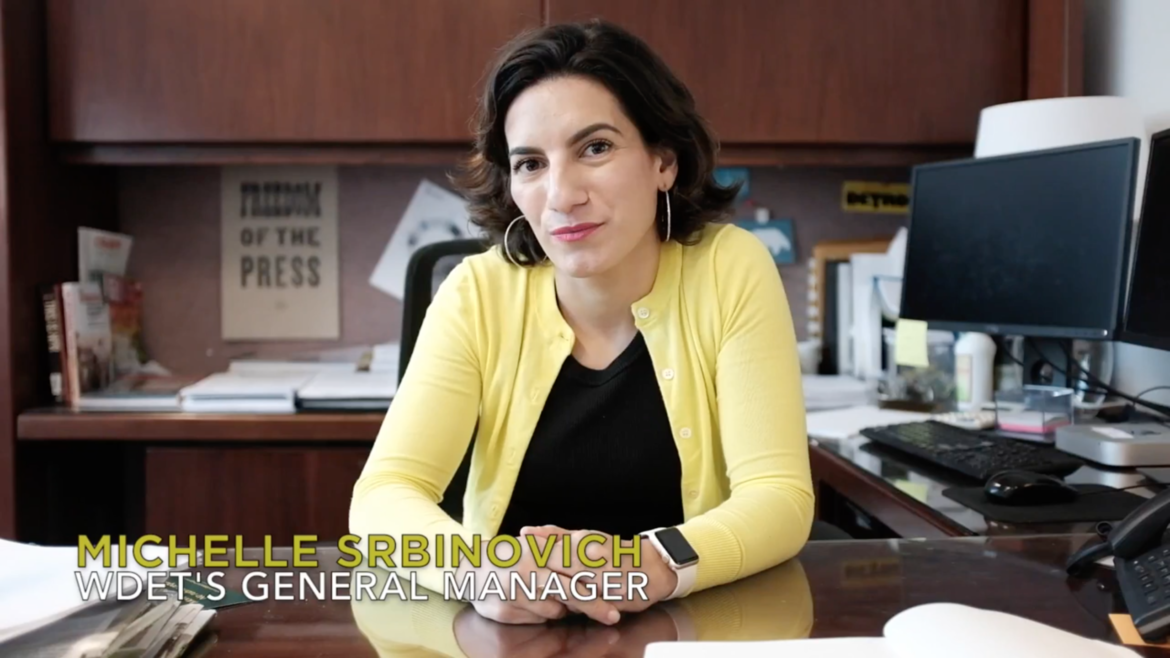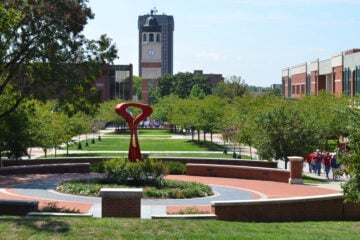Unexpected funding cut raises stakes for WDET’s fall drive

Faced with a 50 percent cut in direct contributions from its university owner, Detroit’s WDET is in the middle of one of the most crucial fall fundraisers in its history.
On-air appeals are accelerating aggressive outreach to both sustainers and new members as the up-and-coming station seeks to recoup a $250,000 shortfall for fiscal 2018, which begins Oct. 1.
WDET set a goal to raise $550,000 — double what it brought in during last fall’s drive — to hit its previous fundraising target and make up the revenue it is losing from Wayne State University. GM Michelle Srbinovich told Current she’s confident WDET can do it.
As of Sept. 20, the campaign was “approximately halfway to our goal and on track to meet it,” according to Derek Donnellon, business manager. Over 50 percent of donations coming in were sustaining gifts.
Though Wayne State University had put WDET on notice that it needed to become more self-reliant, Srbinovich was surprised by the university’s decision to reduce its support. She learned of the impending cut in late June, as Wayne State concluded its budgeting process.
“We are well aware of the budget pressures they face, [but] this was not something we had anticipated happening in fiscal year 2018,” Srbinovich said.
As recently as fiscal 2016, Wayne State’s direct subsidy of $472,000 provided 12.5 percent of the station’s revenues, according to financial details posted on WDET’s website.
Three weeks before the fall drive began, WDET started sharing details about its urgent financial needs by reporting revenue targets on its website and in direct-mail appeals to donors. Srbinovich appeared in a video explainer that was shared on social media.
WDET’s on-air campaign features a spot recorded by Kim Trent, a member of Wayne State’s Board of Governors, discussing how state funding cuts to the university affect WDET’s finances.
Like many university licensees around the country, Wayne State is under pressure from diminished state funding. The university’s own tax-based subsidies remain below 2011 levels, according to an explainer on WDET’s website. University leadership must focus limited resources on its core mission and the strategic priorities of teaching, research and student aid.
Because funding relationships are complicated and not easily explained in on-air messaging, WDET is using all the tools at its disposal. “As we learned earlier in the year with the threats to CPB funding, even our long-time donors don’t fully understand where our funding comes from,” Srbinovich said. “We couldn’t assume that listeners were even aware that we received financial support from the university.”
WDET needs time “to explain the significance of the change in our funding,” Srbinovich said — as well as to meet its higher fundraising target.
For those reasons, the duration of the drive is open-ended, said Candice Fortman, head of WDET’s marketing and engagement.
Though many public radio stations have been compressing their on-air campaigns into “warp” or “flash” drives, traditional campaigns that roll over a longer time period are crucial for stations to attract new donors, said Jay Clayton, individual giving advisor for Greater Public.
“An important component of drives is educating listeners on how important it is to give,” he said.
Converting listeners into new members is a goal of WDET’s campaign. WDET has posted its highest ratings in a decade, Srbinovich said, and the station is starting to see a return on its investments in programming. Her strategy for closing the revenue gap calls for bolstering membership revenues and underwriting sales.
Investing in ‘transformation’
An annual financial statement for 2016, the most recent available, recorded total revenues of $3.8 million and a widening net deficit of $1.2 million. WDET had ended fiscal 2015 with a deficit of $899,000.
The report acknowledged WDET’s continuing struggles with underwriting sales and operating deficits. It also noted that Wayne State University’s willingness to support WDET is predicated on an understanding that management is pursuing strategies to become self-sustaining.
But 2016 had been “the beginning of an organizational transformation which has attracted the attention and support of local funders and the wider media industry,” according to the report. The station invested in local programming and community engagement, and its 2015 average weekly cume of 140,000 grew nearly 28 percent — to 179,100 listeners — that year, according to station officials The annual financial report noted a sharp increase in listeners under age 35.
As fiscal 2017 winds down, WDET is on track to beat its revenue targets for individual donations, Srbinovich said, ticking upward from $111,000 in gains reported in 2016.
WDET is sharing this story with the wider community as it reaches out to donors and new listeners.
Srbinovich, a dynamic GM in her early 30s, has invested in original programming that’s from and for Detroit.
To differentiate its lineup from Ann Arbor–based Michigan Radio, which reaches into Detroit, WDET relaunched Detroit Today as part of a newsroom expansion. CultureShift, a live-hosted combo music and local magazine show, airs during middays.
Wayne State’s funding cut may serve as a nudge to get WDET onto a solid financial footing. Srbinovich doesn’t view it as a one-time crisis, and she is talking with university colleagues about developing a plan to become self-sustaining. “We’re being real about that. It’s an opportunity to become more independent, not a setback,” she said.
Any change that pushes stations to become more autonomous is a good thing, Clayton noted. In his work with local public broadcasters, he encourages stations to tilt their business models as much as possible from institutional subsidies, like university contributions, to audience-sensitive revenue earned from individual donors and underwriters.
“That is basically the funding that is under their direct control,” he said.
Srbinovich joined WDET in 2009 and was baptized by Detroit’s financial meltdown. Wayne State’s move is not the toughest challenge she’s faced. “I voluntarily stepped into the role of co-GM a month after Detroit filed for bankruptcy, and took the reins a year later,” she said.
“WDET gets its DNA from a city that’s known for its resilience and creativity in the face of a challenge,” Srbinovich said. “This one is significant, but we’re facing it as a team and I believe we’ll come out of this stronger in the end.”






